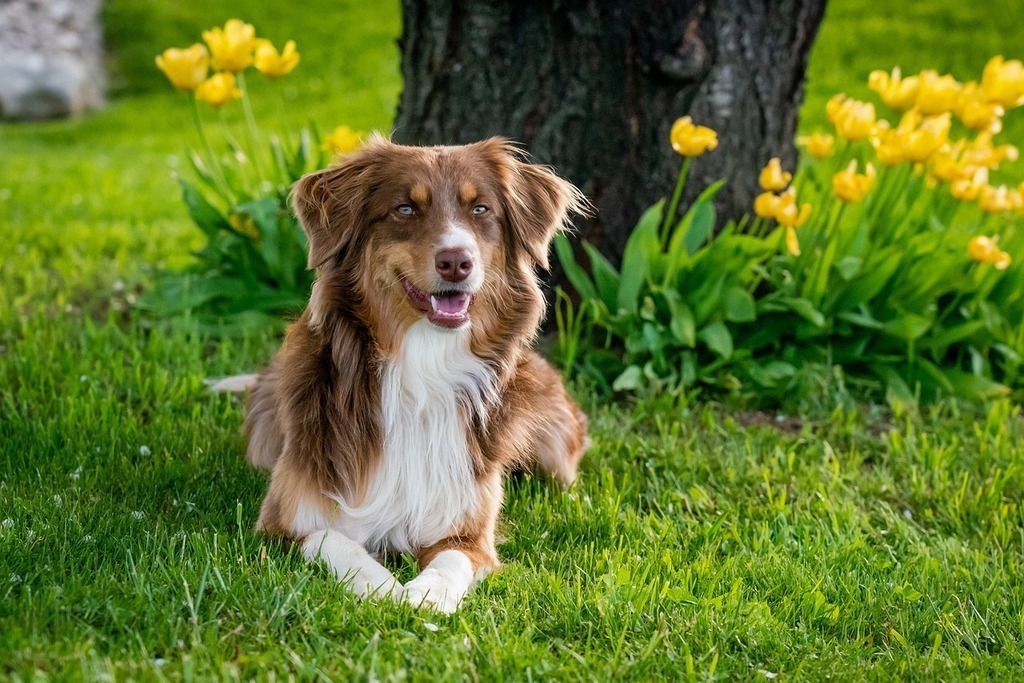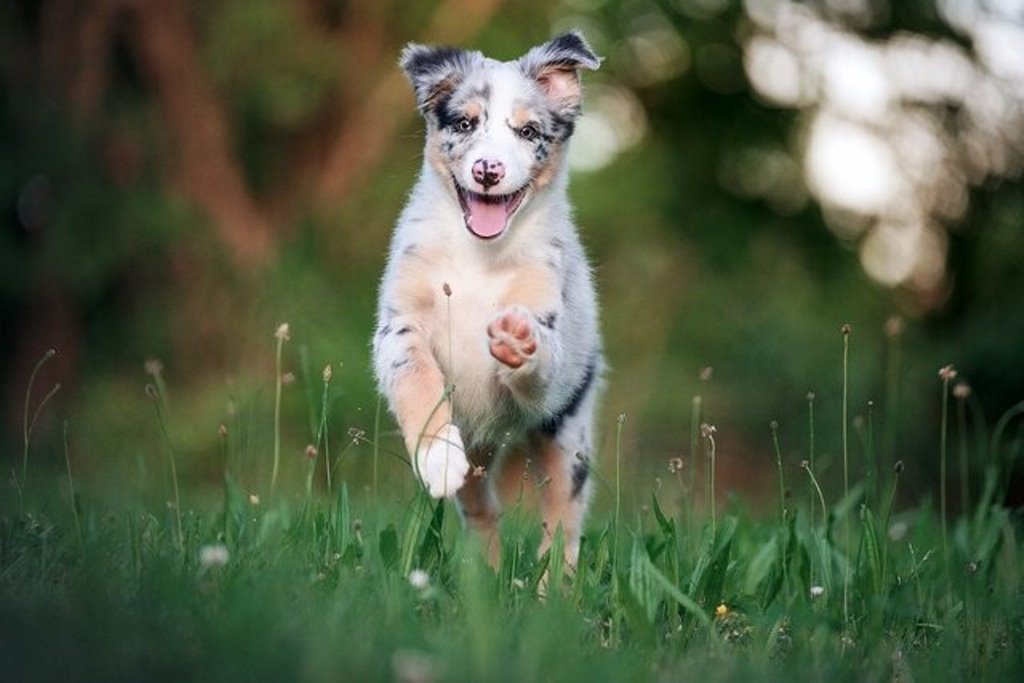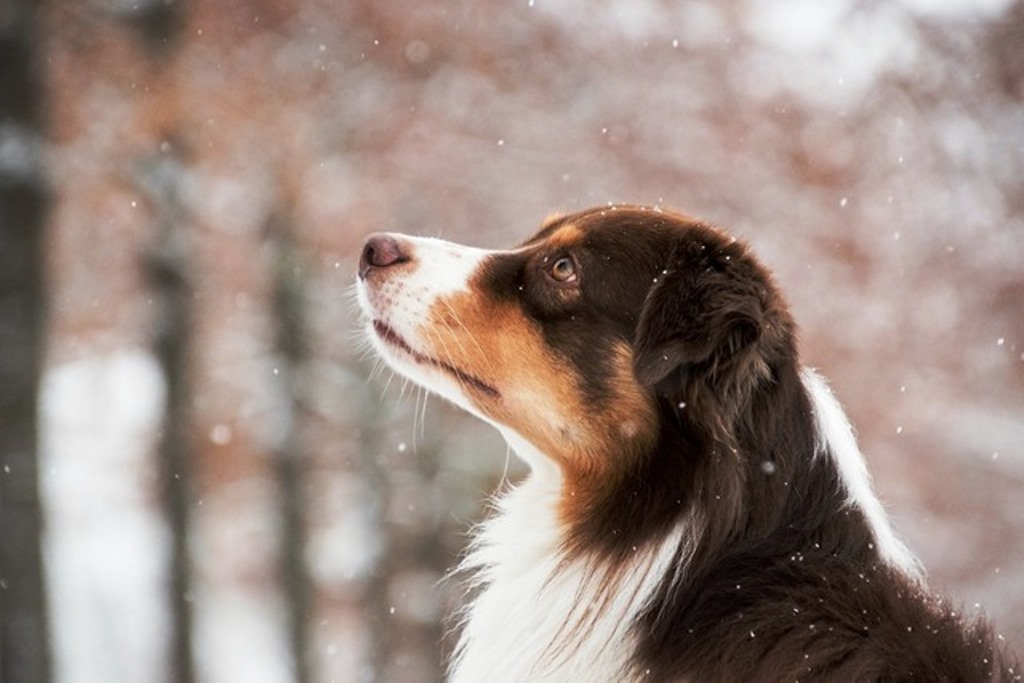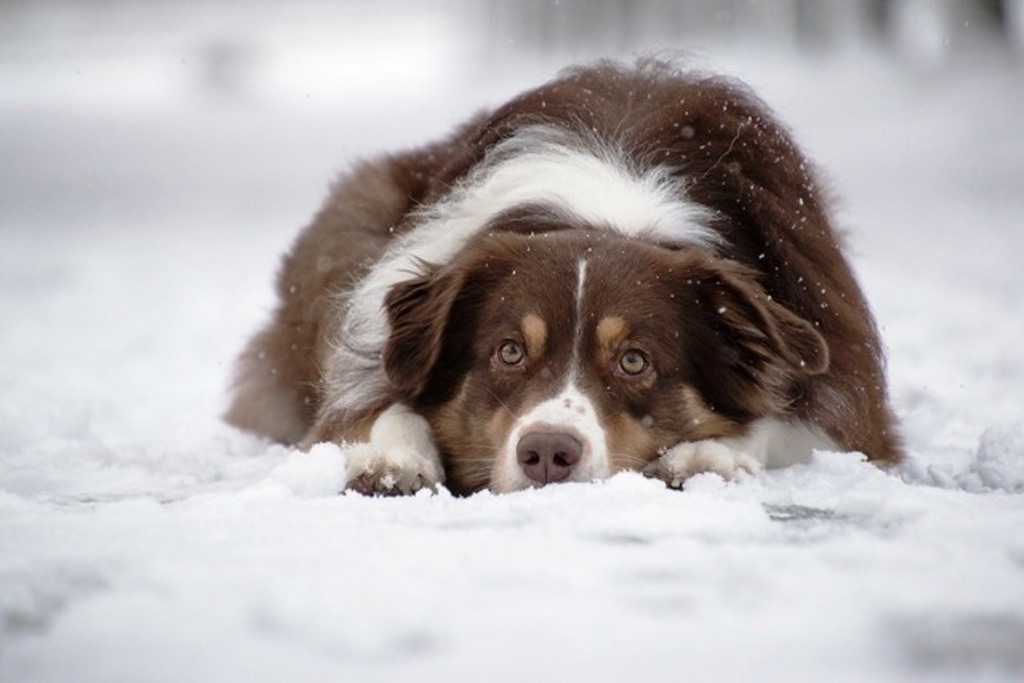
Key Traits of the Australian Shepherd Dog Breed
The origin of the Australian Shepherd dog breed, contrary to its name, did not develop in Australia, but in the United States. This name was given to it by association with the shepherd dog of Basque origin, which arrived in the United States in the 18th century and came from Australia.
In particular, it is thought to have arrived in the United States during the so-called Gold Rush. Basque immigrants brought these sheepdogs with them to look after their merino sheep, which in North America came to be called ‘Australian sheep’.
They are thought to have only one ancestor, the Australian shepherd dog, pastor vasco, originally also known as euskal artzain txakurra, which would later be the dog from which the Australian shepherd would be obtained by crossing with an unrecognised breed but which reveals its Australian origin: the smithfield, which was created by Australian shepherds.
It is a very versatile working dog, intelligent and with a strong shepherd instinct combined with an attractive appearance. It is not a dog that can be left to do nothing; the sheperd needs to be engaged in structured and versatile activities that can stimulate it both physically and mentally. This dog in the United States is still often used to lead herds on ranches.
Character of the Australian Shepherd dog breed

The Australian Shepherd was initially selected as a working dog, and is perfect for this. It has strong herding and guarding instincts, but is also an excellent companion dog, with a good temperament, always active and eager to learn; it is very attached to humans and has a strong desire to please, so it is fairly easy to train.
As already mentioned, it is an intelligent dog, it can immediately pick up on its owner's weaknesses and knows how to exploit them, which is why its upbringing involves prudence, patience and empathy, but also firmness and consistency. The fact that it wishes to please its human does not mean that it will blindly follow all orders; born as a shepherd dog, therefore very autonomous in its choices, it has maintained the characteristic of possessing its own will and therefore a certain independence.
In the family it is particularly fond of children and follows them everywhere. With strangers it is a little reserved at first. With other animals he gets along well. It has a somewhat shy nature and may be a little shy at first, but it soon becomes balanced, does not impose itself, but neither does it suffer. With his master, however, he is very dependent, needing company every minute of his life.
Due to its intelligence, this breed is also used as an anti-drug dog, guide for the blind, rescue dog and sports dog.
One curious thing about the shepherd: he is also called a smiling dog, due to his particular attitude of raising his lips while showing his teeth. It is not a growl: of course not a smile either, it is a tic, but it does seem to smile.
Appearance of the Australian Shepherd dog breed

The Australian Shepherd is a fairly light medium sized dog, the measurement at withers ranges from 50 to 58 centimetres for a weight not exceeding 22 kilograms, the female usually a little less. It is a well-proportioned dog, slightly longer than tall, of medium size and bone structure.
It has an agile, effortless gait and shows great ability as a sportsman. Its tail is straight, fairly long and covered with thick, long hair. Puppies born with a long tail used to have it cut off; today this practice is strictly forbidden by law in many countries. Some specimens are still born without a tail or with a very short tail.
The head is slightly rounded or domed; it has a depth equal to its length, well proportioned to the animal's body. The ears are triangular, not pointed and high on the head, which tilt slightly forward or sideways when showing particular concentration.
The eyes can be of any colour, even speckled and marbled, and are a distinctive feature of this breed, in fact they have colour variations ranging from brown to amber, hazel to blue. And many have different colours for each eye.
Another peculiarity of the shepherd is the coat because of the great variety of colours. The coat is moderately long and coarse, with a thick undercoat, while the coat is smooth and slightly wavy and protects it very well from the weather. In males, the mane and neck area are hairier than in females. In both, however, the hair on the ears, head and front of the forelimbs is shorter and smoother.
The coat may be bicolour, tricolour or double coat, with spots of a different shape and size from the white or fawn colour. These markings are quite widespread on the muzzle, chest and paws. The colours that can be found range from black to blue-merle, passing through red with cinnamon and dark brown tones. They can also be found with spots with a mixture of red and blue or with silver tones. There is also a harlequin shepherd with striking colours.
Care and health of the Australian Shepherd dog breed

The shepherd is a hardy dog that does not require special care; it is prone to certain hereditary diseases, the most frequent being hip dysplasia, elbow dysplasia and oculopathy, and after the age of 3, epilepsy may occur. As with the collie breed, many Australian shepherd dogs experience the MDR1 gene mutation, which leads to hypersensitivity to various drugs, including ivermectin (a common pesticide).
When two types of merles mate, the offspring frequently show deafness and/or blindness. In many countries including Italy (as of 3 October 2018 - ENCI), merle x merle mating is therefore prohibited by law, with the intention of safeguarding the breed.
The care required for the coat is very little; just brush it every two to three days to avoid felting of the coat and as far as cleaning is concerned, a bath every month or more is sufficient, depending on how long the dog is outdoors. One must be very careful about cleaning the ears, as this breed is often prone to infections and ear infections. In general, however, the shepherd is a long-lived dog, and can live to be over 15 years old.
As far as feeding is concerned, if the shepherd gets enough exercise during the day it does not need any special attention, it is a dog that can handle itself very well.






















